Jack Bouttell: 11th Hour Racing Team driven on by a new mindset on Leg 5
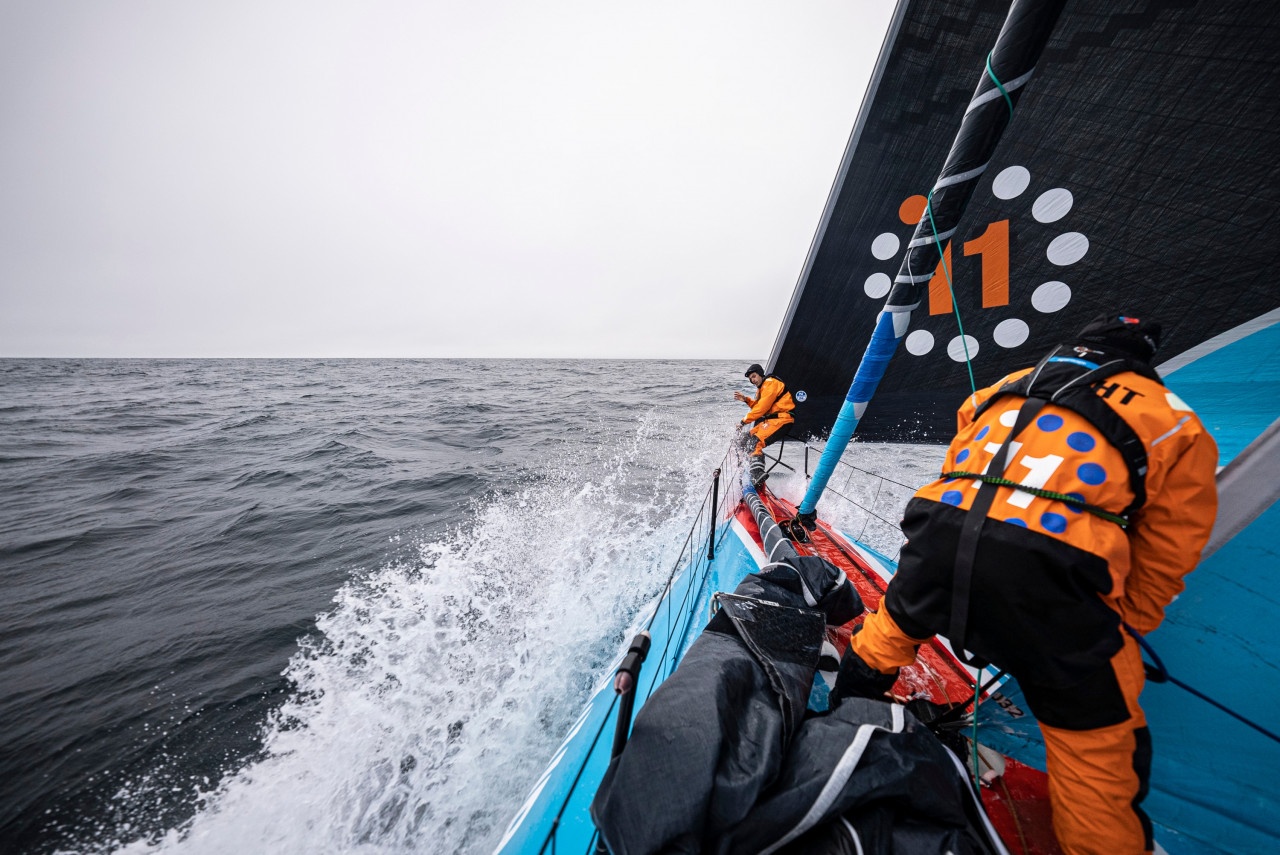
Back home in Brittany the British-Australian sailor Jack Bouttell is feeling and sounding confident about his crew as 11th Hour Racing Team follows its victory in Leg 4 of The Ocean Race by setting the pace on the transat.
Bouttell is not in the least bit surprised to see the American-flagged boat skippered by Charlie Enright out in front after three-and-a-half tough days at sea on the 3,500-nautical mile stage from Newport to Aarhus.
This morning 11th Hour Racing Team’s Mãlama still had around 1,900 miles to sail, as she flew downwind at near-record pace at a position about 600 miles east-northeast of St John’s in Newfoundland.
She was 31 miles ahead of second-placed and race-leading Holcim-PRB skippered by Kevin Escoffier, and 80 miles ahead of Team Malizia skippered by Boris Herrmann. Paul Meilhat’s Biotherm was in fourth position, more than 200 miles behind Mãlama.
“I think they have been sailing well so far,”said Bouttell, who sailed in the first three legs and will re-join the Mãlama crew for the final two legs from Denmark to the finish at Genova. “I think it is about carrying that momentum forward. We are confident, confident in the boat now – confident that we have speed in the conditions we know. And obviously Si-Fi (navigator Simon Fisher), Charlie (Enright) and Justine (Mettraux) know the boat pretty well now, and how to sail it, and Charlie (Dalin) knows these boats pretty well too.”
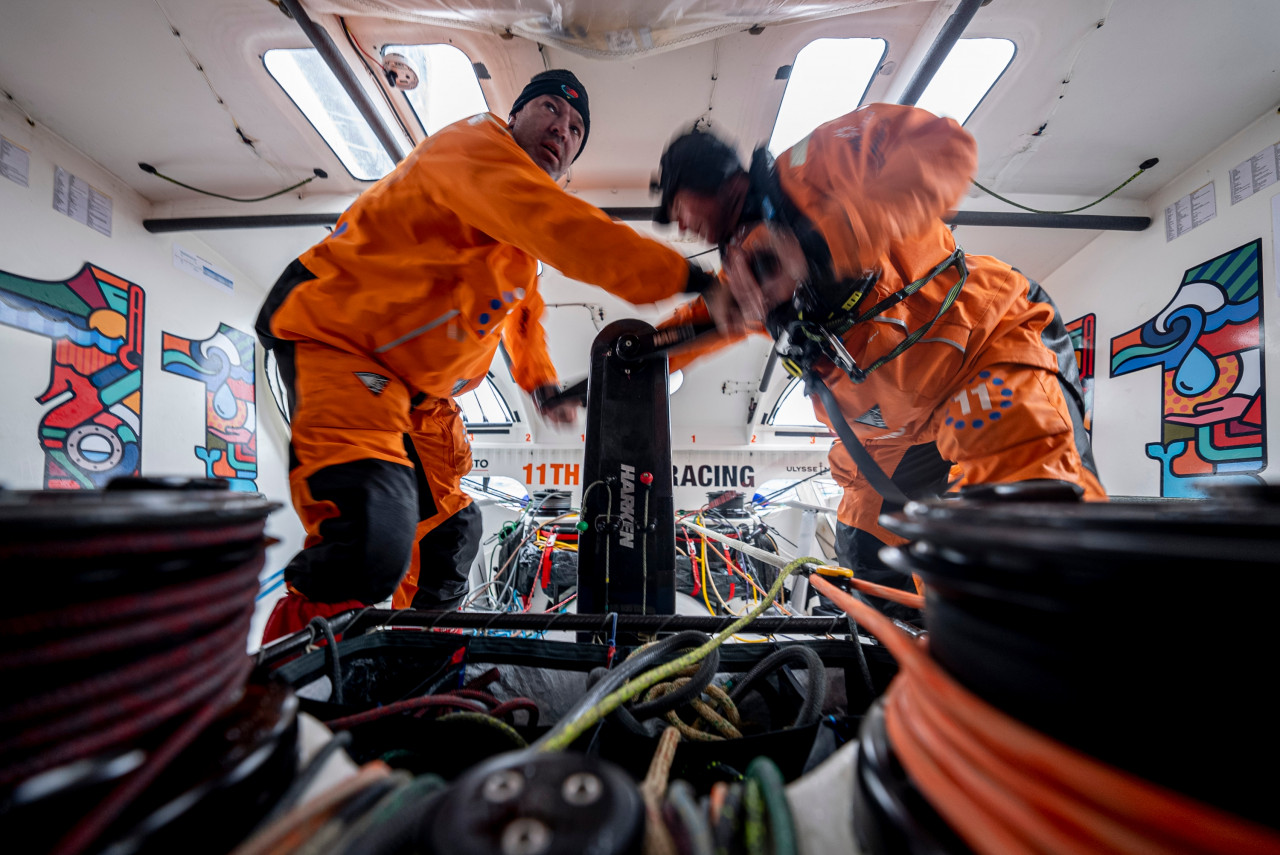 © Amory Ross / 11th Hour Racing Team
© Amory Ross / 11th Hour Racing Team
Talk to Bouttell and you realise that this team that started as many people’s pre-race favourites but then struggled in the first three legs, has changed its approach to a race that it prepared exclusively for. Brazil was a re-fresh moment when the team looked at every aspect of how it was operating and made improvements and changes in all areas. But the key shift was a psychological one, as Bouttell explained.
“We came into the race very much with the mindset of ‘this is our race to lose,’”he said. “We were the first boat entered and the most prepared and so on. We sailed conservatively and tried to play safe with the fleet in the early legs. In Brazil we shifted to saying ‘it’s our race to win’ with the idea to sail more aggressively, take more risks and push the boat harder.”
Another key change is the way Fisher is being used. Instead of having him rotating as part of a group of four on watch, he is now outside the main pattern. “For the last part of the race we have had a bit of a re-think – changing up the watch system to let Si-Fi spend more time just on navigation and a bit less sailing the boat. So for this leg and the last two we will have him floating a bit more and we are trying to rotate three instead of four,”said Bouttell.
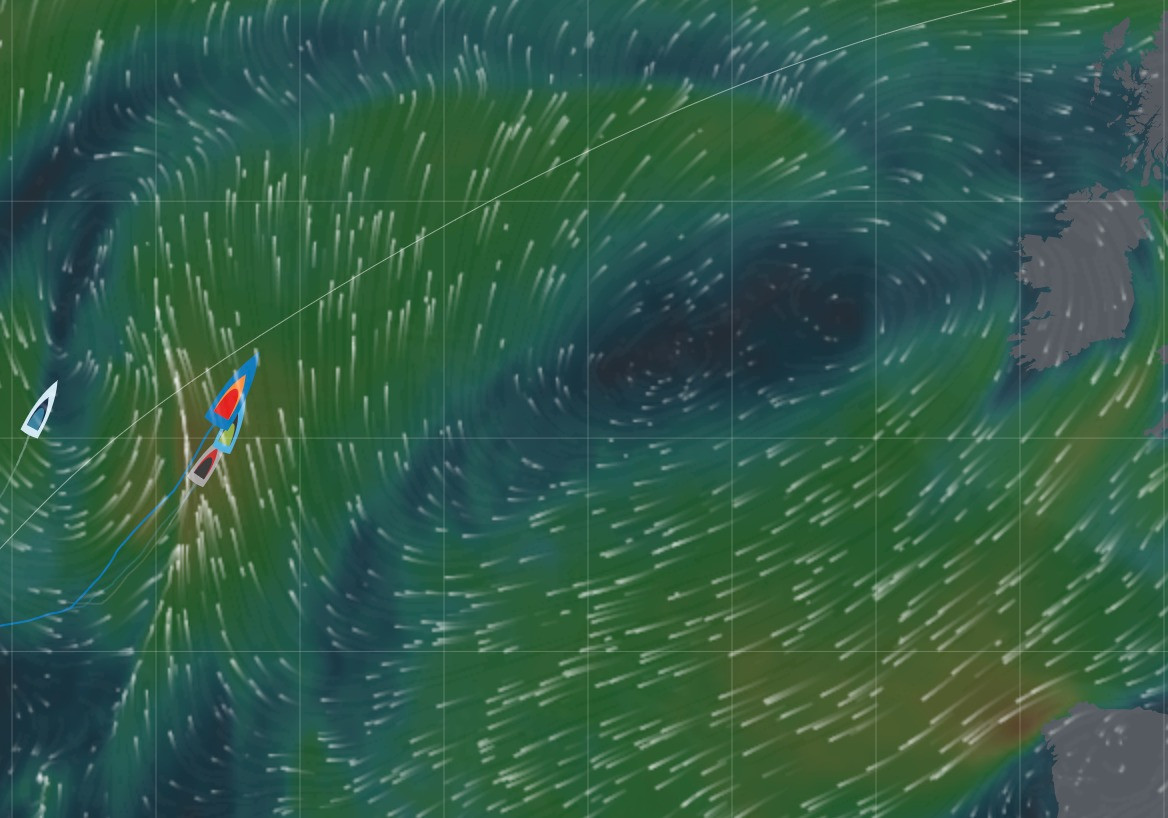
That makes the challenge all the harder for the other three on board, as they battle their way across the north Atlantic and then over the top of Scotland and on towards Denmark in this transatlantic double-pointer. The way the team is approaching it is to take nothing for granted in the early stages and then be ready to win from in front – or behind – at the death.
“The approach we had before the leg start – the game plan,” said Bouttell, “was for a busy couple of days at the beginning, then a tactical section that might be a bit easier on the body in the middle part. Then, if you get to Scotland first, don’t assume you’ve won the leg and, if you get there last, don’t assume you can’t win the leg.”
Checking in with Christian Dumard, the official meteorologist to The Ocean Race, you can see why this is a good leg to have Fisher working harder on his tactics as he tries to outsmart Charles Caudrelier, his rival navigator on Holcim-PRB and Yann Eliès on Malizia. Dumard says the crews are facing an unusual Atlantic weather picture for this time of year, with a large area of high pressure in their way centred about 500 miles west of Galway.
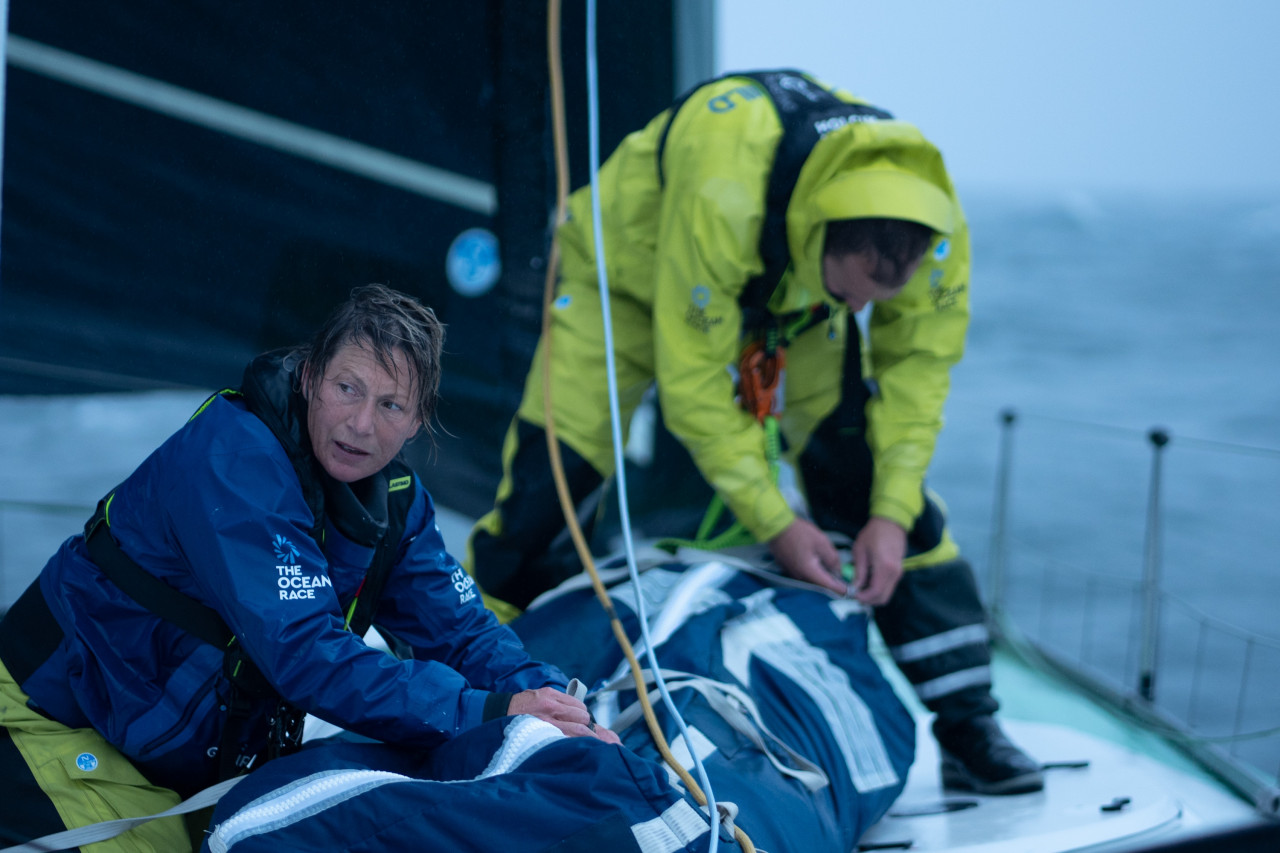 © Yann Riou / polaRYSE / Holcim-PRB
© Yann Riou / polaRYSE / Holcim-PRB
It will be how the tacticians deal with this obstacle that is likely to heavily influence the outcome of the leg. “Because the high pressure is not going to move much, they have to go around it to the north,” said Dumard. “The wind is bent around it and the shortest route is to go and gybe close to the centre of the high. They have to find a good compromise between gybing too close to the centre, because there is not much wind there, and doing a longer route and staying further away from the centre.”
Dumard says the detail of how teams execute this will be very demanding for Fisher and his rivals and Mãlama, as the leading boat, could easily lose or gain a lot as she comes under the influence of the high. “From one weather model to the other, they do not have exactly the same positions for the high, so navigators have to update their strategy all the time,” he said. “It’s not like they can go to sleep for two days and leave it to sailing speed. They will have to adjust their course and their strategy and because of the differences between the models we don’t know exactly how far north they will end up going.”
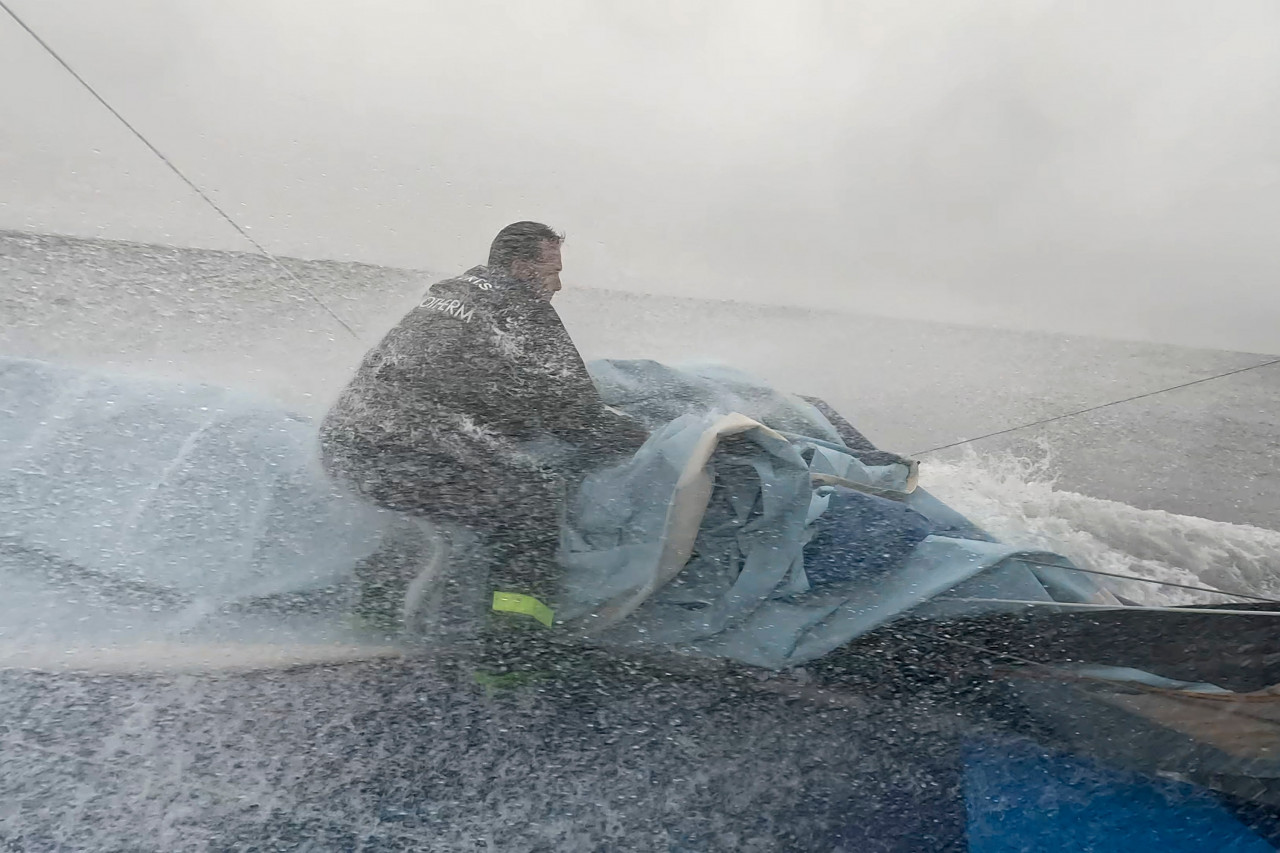 © Ronan Gladu / Biotherm
© Ronan Gladu / Biotherm
However, he believes this could still be a relatively quick passage as the teams race over the top of the windless zone towards the top of the British Isles, where they could encounter strong northwesterly winds that will drive them on towards Denmark.
But not for the first time in The Ocean Race, the final stretch to Aarhus in the Kattegat could be a nail-biter. “The crews could have very light winds once they get north of Denmark,” explained Dumard. “Anything could happen then. But that is still far away and that could change – they could still have quite strong northeasterly winds at that stage.”
Ed Gorman
Teams info
After a stunning 2025 season Sam Goodchild is the IMOCA Globe Series Champion for the second time
After a long season at the top of the IMOCA fleet that featured three race wins, Great Britain’s Sam Goodchild is for the second time in three years the IMOCA Globe Series Champion.
•••Quel rôle peut jouer la course au large dans la transformation du transport international ? Avec Pie…
Pour ce 10ᵉ épisode de Transitions, enregistré au Havre lors du départ de la Transat Café L'Or, nous recevons Jeremy Pochman, PDG de 11th Hour Racing, et Pierre-Antoine Morvan, responsable du pôle course au large et supe…
•••